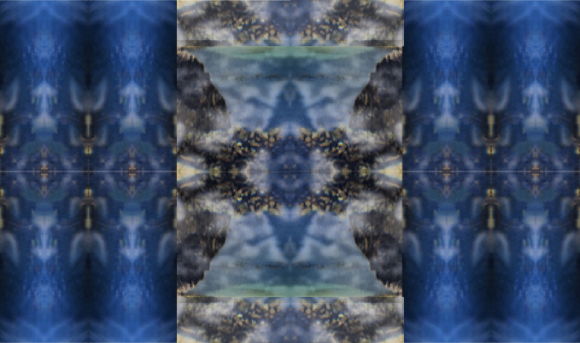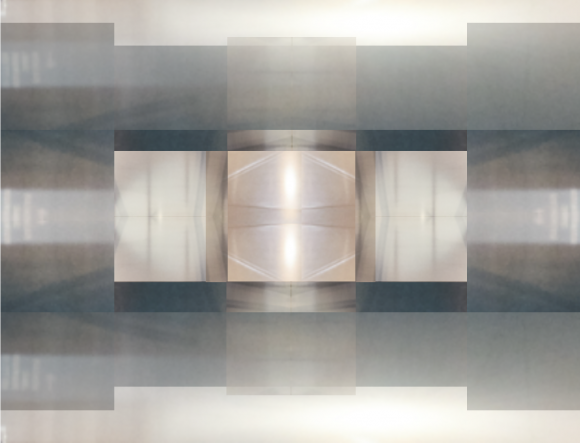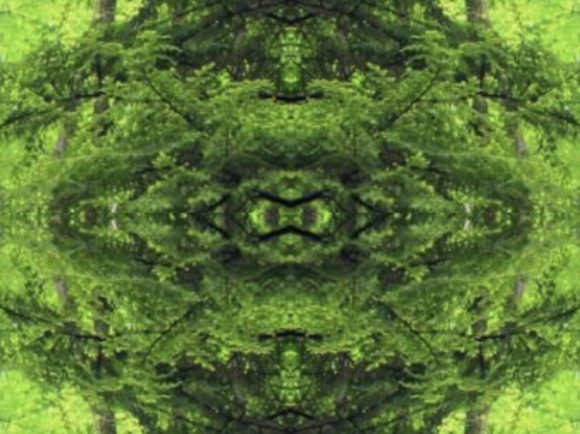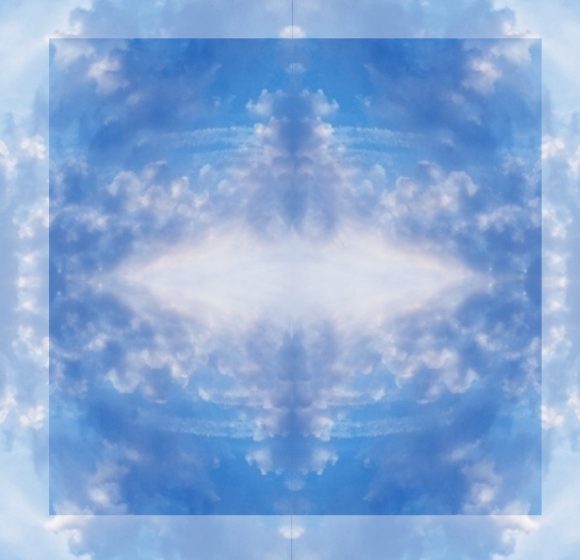In my attempts to understand Jung’s views on synchronicities in depth, I have now for some time followed up a hint that he repeatedly gives off: namely, that synchronicities are more likely to appear when an archetype is triggered (or “constellated”).
Now synchronicities are a phenomenon (“something that appears”) in an individual person’s life, usually at some particular stage or around some event in that life. Therefore, we can assume that there are certain patterns in people’s lives (i.e. typical stages or events) when archetypes are triggered, resulting in a greater likelyhood of experiencing synchronicities.

And in fact, such patterns are central in Jung’s thinking. In his universe, human beings inevitably end up living through them, and some of their marks are: a) a previously successful life activity does no longer fit the circumstances; b) the person is not fully conscious of the conflicting forces, and consciousness and will are incapable of resolving the problem; c) a solution exists, has frequently been found and lived through in the past, i.e. in the lives of previous generations; d) that experience has somehome been preserved in the unconscious; and e) appears now, represented by a psychological image (projection, dream figure, mythical story, …) which has a chance of being taken up by the conscious understanding of the person who is currently in conflict or difficulties.
To summarize (somewhat roughly and inaccurately): such patterns are a kind of instinct that helps us with adapting as a person whenever either the environment (the external circumstances) or our own psyche have changed and we’re therefore stuck in a conflict or difficulty.
1. In Symbols of Transformation (a comparativaly early work), Jung discusses an instance: “fear of living”, also popularly known as “mother complex” (GW V, §§456-457). He explicitly characterizes that type of inner conflict as such a pattern, appearing “naturally only in those moments when a new orientation or adaptation turns out to be necessary”, and therefore “the archetypes are the original image [Urbild] of the current situation of distress” (GW IV, §450).
Now he goes on:
The archetypal structure of the unconscious corresponds to average events and the general course of things. The changes that confront human beings are not of infinite variety, but rather represent variations of certain types of what happens.
Die archetypische Struktur des Unbewußten entspricht den durchschnittlichen Vorkommnissen und dem allgemeinen Ablauf der Dinge. Die den Menschen zustoßenden Veränderungen sind nicht von unendlicher Mannigfaltigkeit, sondern stellen Varianten gewisser Typen des Geschehens dar.
GW IV, §450.
This is what makes it a pattern: a recurring, recognizable type of situation.
(Note, however, that what makes something a pattern is usually in the eyes of the beholder. Different people may perceive different patterned structures in events. “Seeing patterns” is a form of interpretation, and there are always infinitely many interpretations of the same factual material. Jung tended to view his own interpretations as “obvious”, and those of others, when they diverged, as “prejudiced”. This makes his views no less fascinating, but we must be aware that they express his personal convictions, not a verifiable empirical account, as he sometimes claims. When Jung says “experience shows that …”, he wants this to have the force of established empirical fact, but in truth the “experience” in question is more often than not merely his own subjective, albeit powerfully “numinous”, experience. He frequently trades on an equivocation when he invokes “experience”.)
When a situation of distress occurs, an archetype which corresponds to that situation gets constellated in the unconscious. […] it attracts contents of consciousness, conscious ideas, and through them it becomes perceptible and thus capable of being conscious itself. Once it crosses over into consciousness, it is experienced as illumination and revelation, or as a saving thought.
Tritt nun eine Notlage ein, so wird ein dieser Notlage entsprechender Typus im Unbewußten konstelliert. […] er [zieht] die Inhalte des Bewußtseins, bewußte Vorstellungen an, vermöge welcher er wahrnehmbar und damit bewußtseinsfähig wird. Wenn er ins Bewußtsein übertritt, so wird dies als Erleuchtung und Offenbarung oder als rettender Einfall empfunden.
GW V, §450.
Thus archetypes are triggered. Perhaps that term is a bit misleading: the archetype represents the entire process, i.e. the sum of circumstances, human perceptions and behaviors, even all the possible outcomes; therefore, what happens is not a separate further occurrence (of a “triggering”), it merely means that the person now finds themselves in circumstances that fit the pattern. (Jung’s own term, “constellated”, captures this holistic aspect very well.)
In the mind of the person in that scenario, the solution can appear as a sudden insight, an illumination — which is a kind of subjective indicator that an archetype was involved. But in any case, the solution that comes from the archetype (i.e. was already stored in the pattern) must appear in some way as a concious content (see marker e) above). It may be in the form of a thought, a dream image, or even in coming across a book or teacher who suddenly appears relevant and helpful (“once the student is ready, the teacher will appear”). In extreme cases, it may be what we know as “vision” or “calling” (think the Saul/Paul story).
2. Another passage, which also refers to patterns of life situations in our sense here, appears in Jung’s essay on Paracelsus (“Paracelsus als geistige Erscheinung”), and presents them from a slightly different angle (and in a more dramatic light).
Such [special psychological] situations are usually characterized by a more or less sudden breakdown of a form of life, or position in life, which previously appeared as vitally important condition or foundation of a whole individual course of life. [a)] When such a catastrophe occurs, not only all bridges backwards are destroyed, but there seems to be no path forward, either. [b)] We face a hopelessly impenetrable darkness, whose abysmal emptiness is now filled in by the manifest vision or tangible presence of an alien, but helpful being [e)] — just as when, in a long-lasting great solitude, the silence and darkness becomes visibly, audibly, and tangibly animated and one’s own unknown approaches us as an unknown figure.
Solche [besonderen psychischen] Situationen sind stets gekennzeichnet durch ein mehr oder weniger plötzliches Zusammenbrechen einer Lebensform oder -lage, die zuvor die unerläßliche Bedingung oder Grundlage eines ganzen individuellen Lebenslaufes zu sein schien. [a)] Tritt eine derartige Katastrophe ein, so sind nicht nur alle Brücken nach rückwärts abgebrochen, sondern es scheint auch kein Weg weiterzuführen. [b)] Man steht vor einem hoffnungslos undurchdringlichem Dunkel, dessen abgründige Leere nun ausgefüllt wird durch die sichtbare Vision oder fühlbare Gegenwart eines fremdartigen, aber hilfreichen Wesens [e)], wie sich ja auch in langedauernder großer Einsamkeit die Stille oder das Dunkel sichtbar, hörbar oder fühlbar belebt und das eigene Unbekannte in unbekannter Gestalt an uns herantritt.
GW XIII, §216.
(I have indicated once more the markers I listed above, in brackets in the quotation. Also, I couldn’t resist to quote this beautiful, poetic passage at length: it is one of those where Jung’s style is at its most powerful and inspired.)
Interestingly, in this case the archetype does not pull in “conscious contents”, but rather fills a “dark emptiness” in the mind of the person. The latter is thus a form of projection, an important notion in Jung’s views (though possibly under-utilized in his account of synchronicities). In such cases, Jung says, “phantasy images appear, in which the unconscious can be pictured and experienced” (GW XIII, §220). But projections are not made consciously, they always happen, as an expression of something that is unconscious. Thus in this essay (and frequently all over his writings on alchemy, which latter he understood broadly to be a projection of unconscious psychological processes into the material), Jung emphasizes that part of what triggers the archetype — some conflict or difficulty — is generally something the person is themselves unaware of (marker b) above).
3. Jung’s essay on spirit (Geist), which I have been exploring in my recent postings, likewise refers to patterns of life situations, and exposes once more all the markers. It discusses the appearance of spirit, personified usually as a Wise Old Man or similarly, frequently in dreams or fairy tales.
Der alte Mann erscheint immer dann, wenn der Held sich in einer aussichtslosen und verzweifelten Situation befindet, aus der ihn nur gründliche Überlegung oder ein glücklicher Einfall befreien kann […]
The old man always appears when the hero is in a hopeless and desperate situation, from which he can only be saved by profound consideration or a fortunate flash of insight […]
GW IX/I, §401.
That is marker a), and Jung adds that the hero typically “cannot himself, for external and internal reasons, bring this [consideration or insight] about” (ibd.), which is marker b).
Yet a solution exists, of course, since the hero’s position is only the latest instance of a long, ever-repeating cycle of similar situations in the history of the species (markers c) and d)):
Die psychische Erscheinung des Geistes […] ist [archetypischer Natur], das heißt das Phänomen, das man Geist nennt, beruht auf der Existenz eines autonomen Urbildes, das vorbewußt in der Anlage der menschlichen Psyche universell vorhanden ist.
The psychological appearance of spirit is […] of archetypal nature, i.e. the phenomenon that is called spirit is based on the existence of an autonomous original image, which is universally available in the foundations of the human psyche, before all consciousness.
GW IX/I, §396.
Finally, the helpful contents which the archetype now contributes must themselves in some way become conscious, i.e. fill in the void in the person’s consciousness. In order to do so, the archetype generates self-representing images, usually personifications, which as such can appear in the person’s conscious psychology:
Der Archetypus des Geistes in Menschen-, Gnomen- oder Tiergestalt tritt jeweils in einer Situation auf, in welcher Einsicht, Verständnis, guter Rat, Entschluß, Plan usw. nötig wären, aber aus eigenen Mitteln nicht hervorgebracht werden können. Der Archetypus kompensiert diesen geistigen Mangelzustand durch Inhalte, welche die Lücke ausfüllen.
The archetype of the Spirit, in human, gnomic, or animal form, appears generally in situations where insight, understanding, good advice, decision, planning etc. would be required, but cannot be brought forward from one’s own stock. The archetype compensates this spiritual lack by supplying contents which fill the gap.
GW IX/I, §398.
4. All this comes full circle in the synchronicities essay, where again Jung refers to “situation[s] in which insight and willed decisions run against the unsurmountable barrier of an opposing and adverse unconscious. This relative defeat of the powers of consciousness usually constellates the moderating archetype” (GW VIII §895; my emphasis).




[…] is a particular kind of life situation, in which a person may find themselves, and which fits the pattern I have discussed in my earlier post: it is one of those situations where archetypes are triggered (or […]
[…] the midst of chaotic life, there is a hidden meaning. More precisely: chaotic life is represented by the anima pattern, and sustained engagement with that archetype leads to the […]
[…] ideas just as we find personifications and geometrical symbolism there. (I have already explored patterns of life situations, and a particular instance of those, in previous […]
[…] “hidden meaning behind chaotic events in life” appears when subjects find themselves in certain types of situation: namely, seemingly impossible situations, when it seems that “there is no way […]
[…] In the essay on spirit, the archetype (personified, say, as Wise Old Man) appears in “hopeless and desperate situations”, and then provides insight — gives the situation meaning and shows a path forward. In other words, there are certain kinds of situational patterns which constellate the archetype. […]
[…] the individual Self of that person in the Jungian sense, i.e. covering both personal psychology and archetypal situation, ‘constellated’ dominants of the collective unconscious. To be caught in a pattern such as the […]
[…] (even dominating part) does not depend on the “composition” of the individual, but more on the circumstances in which that human being happens to find themselves. If circumstances happen to trigger an […]